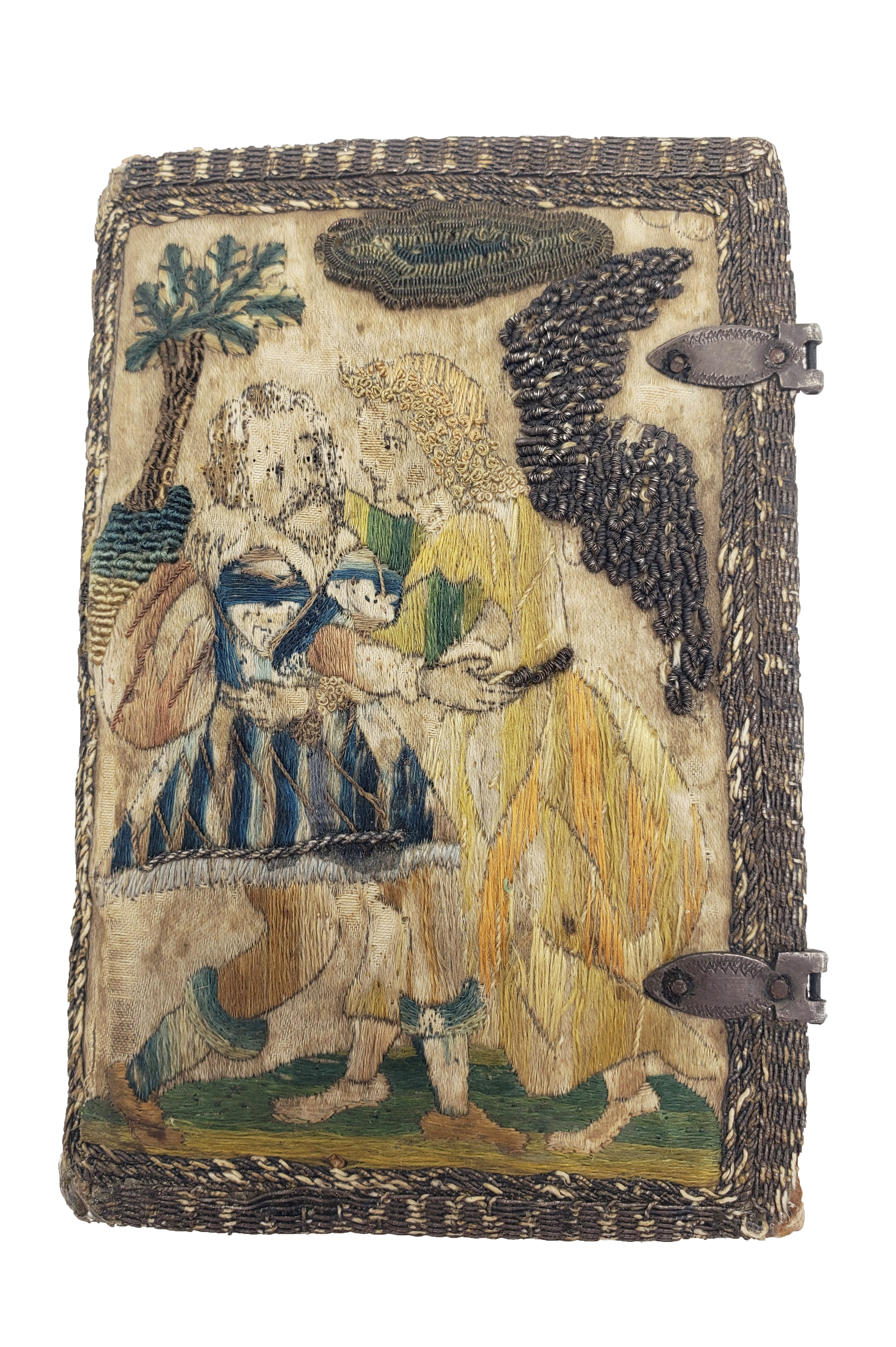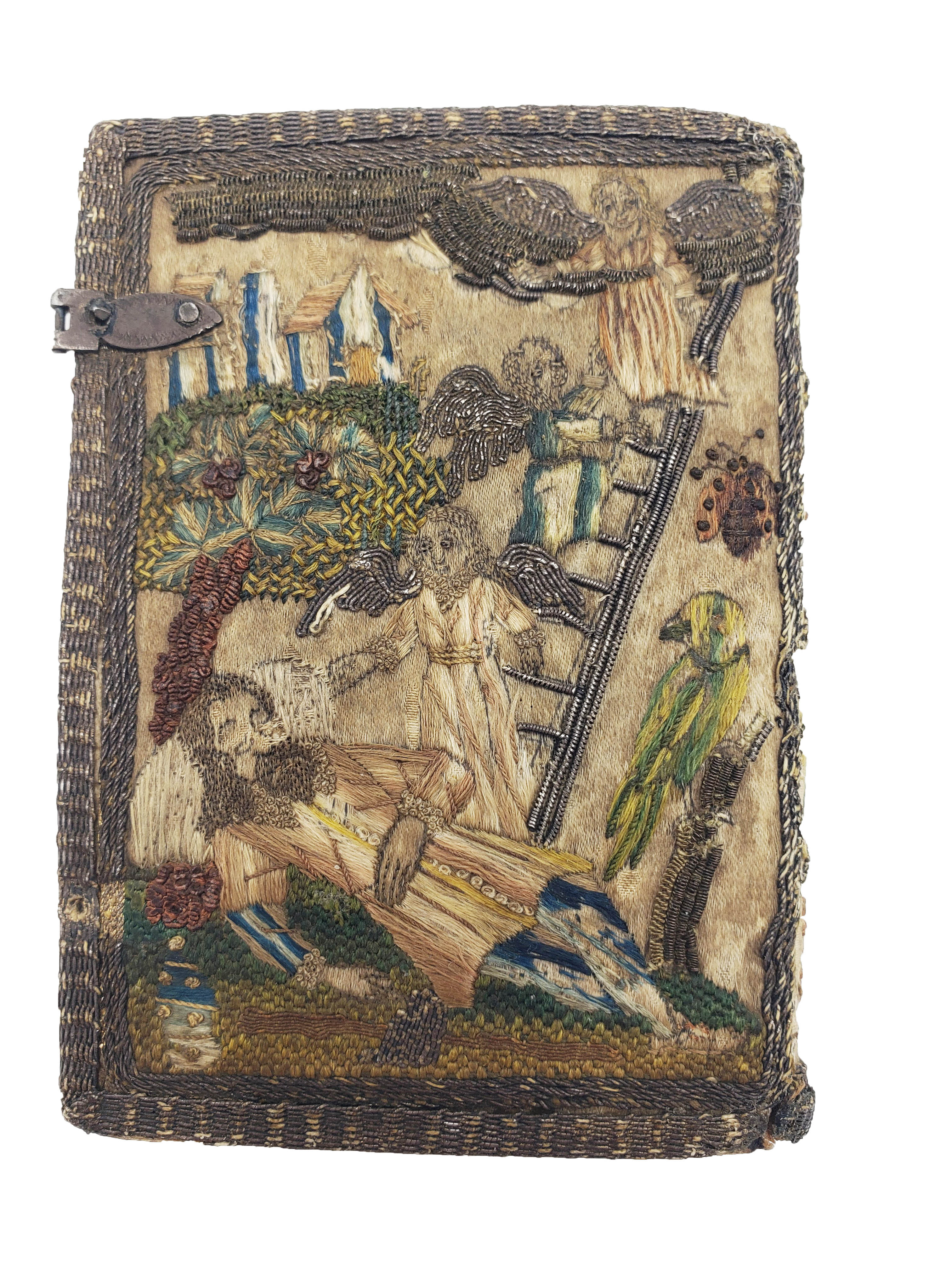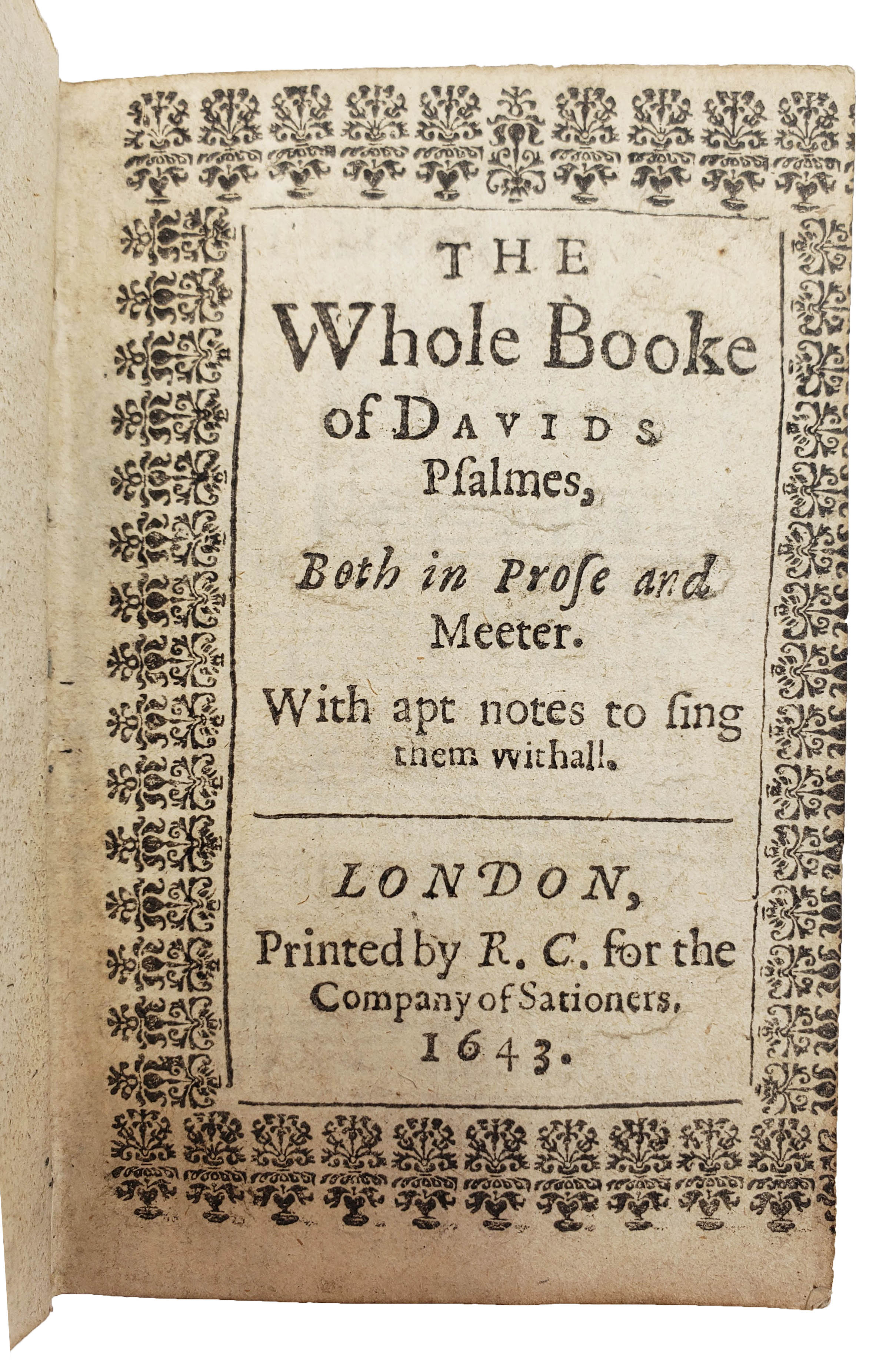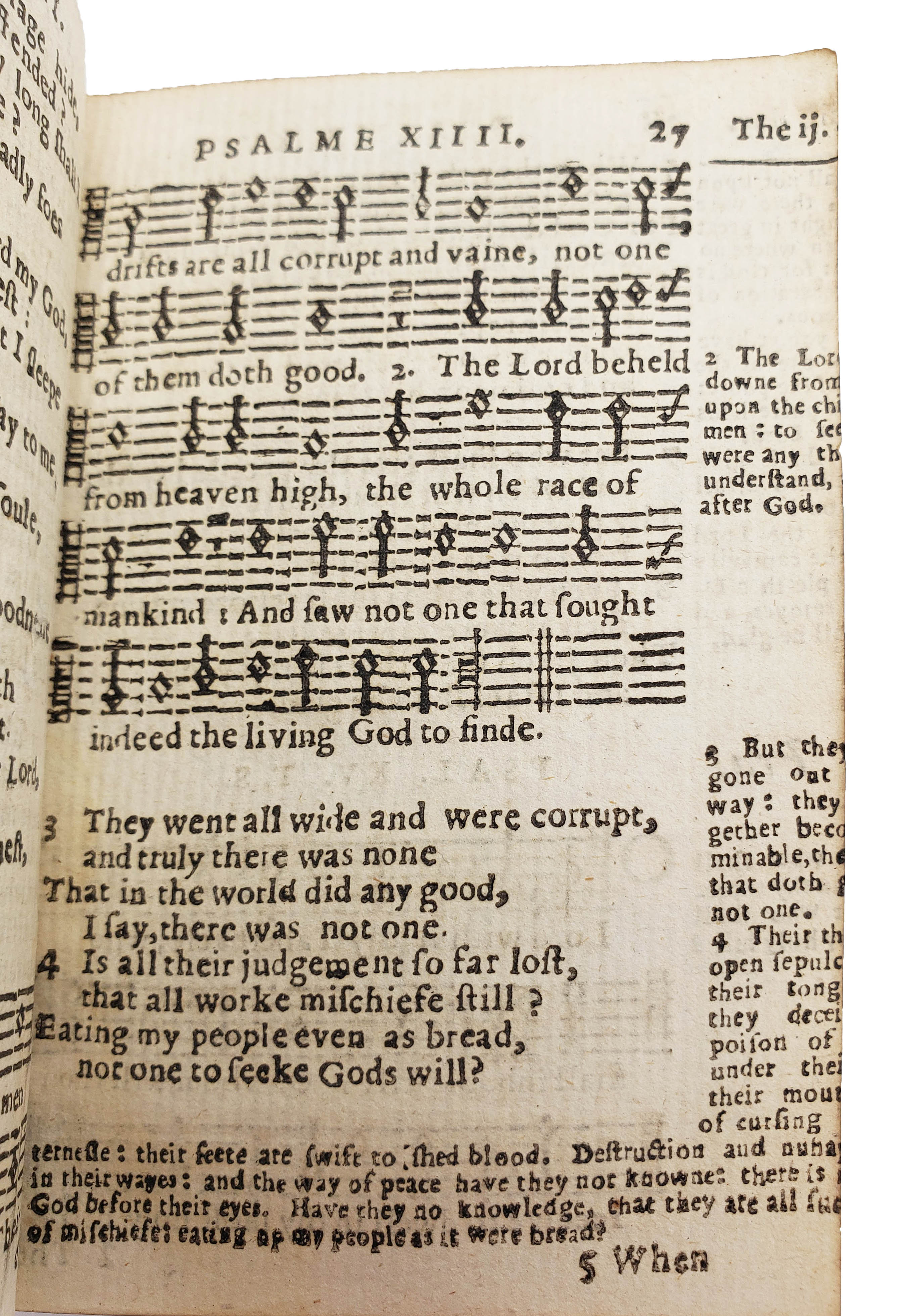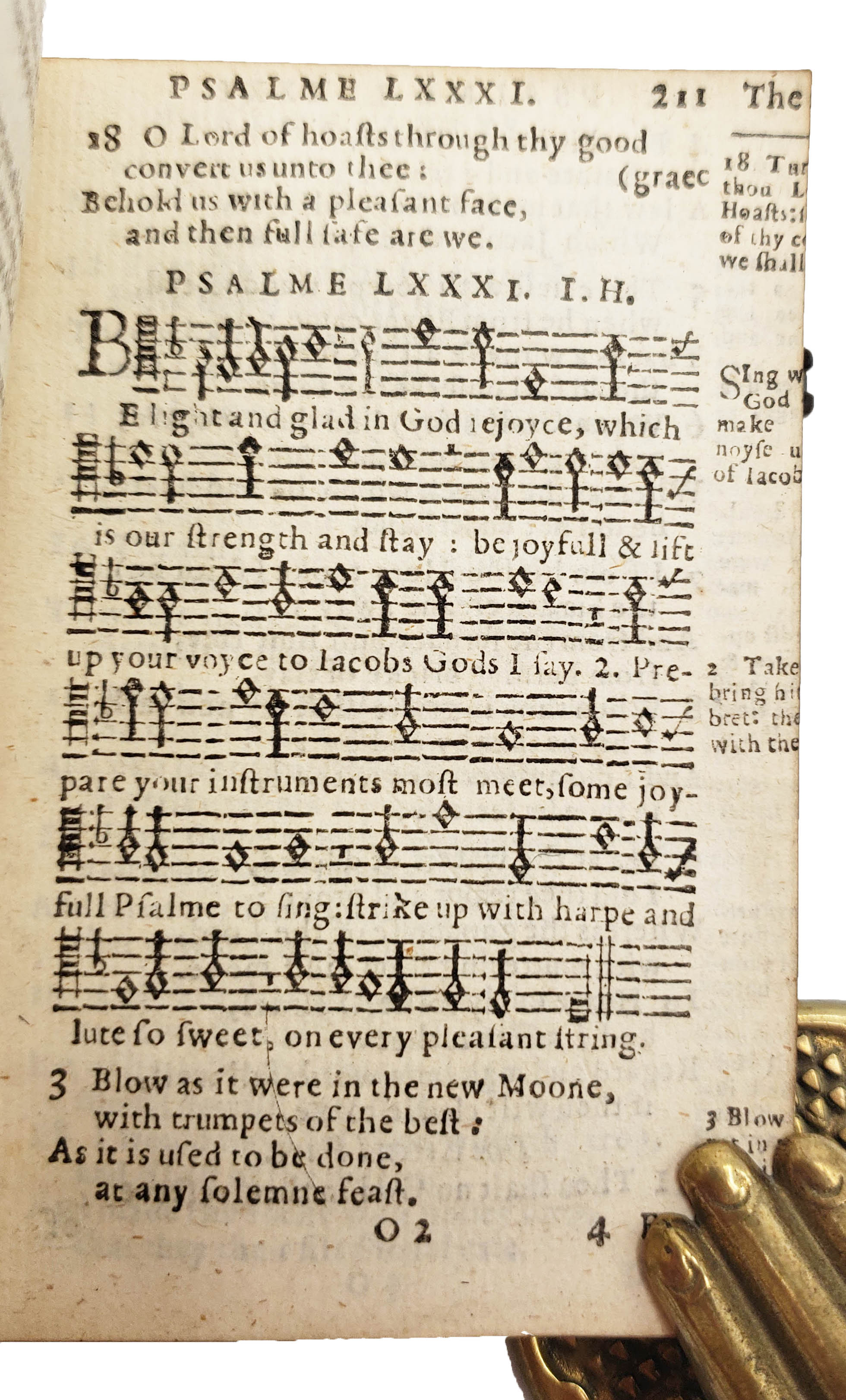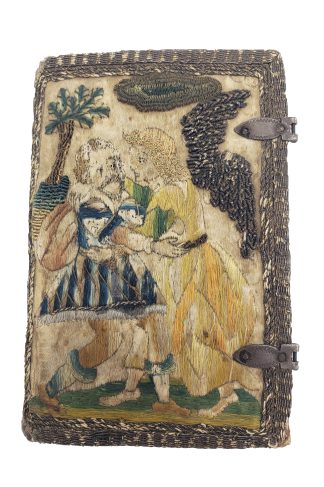PSALMS
EXTRAORDINARY PICTORIAL EMBROIDERED BINDING
The whole booke of psalms.
London, R.C. for the company of Stationers, 1643.£25,000.00
16mo. pp. 439 [9]. Roman letter, little italic, diamond head musical notation throughout. Stamped floriate border to t-p, printed marginalia throughout, index at end. Pages trimmed at foredge with minor loss of border and sidenote, light age yellowing, a few pages creased. A good copy in ivory coloured satin, embroidered with coloured and silver thread, depicting two scriptural scenes. 4 compartments to spine, each containing an embroidered flower, remains of metal clasps, silver braid to edges, a little loose at base of spine but condition generally remarkably good, a.e.g. In folding box.
A ‘very quaint’ and extremely unusual embroidered book of Psalms, bound in white satin covers and colourfully embroidered with two textually accurate scenes from Genesis. Such three-dimensional pictorial bindings representing active figures, rarely appear on the market today. On the upper cover, Jacob wrestles with an angel (32:22-31); the two figures are in profile, locked in battle, their arms fixed on waists and shoulders, a tree stands behind Jacob and silver cloud above the brawling pair. The patriarch is clad in an elaborate blue, green and pink tunic with puffed sleeves and ankle-high boots, executed in a satin stich. His brown hair is coiffed in fashionable 17th C style. His opponent dons a golden tunic with green sleeves, his head crowned with a flowing mass of French knots which fall down his back. The angel’s wings and belt are executed in raised silver stumpwork, its resplendence highlighting his status as a heavenly creature.
The lower board is somewhat more complex in its composition. It depicts Jacob’s Ladder, whereby the patriarch has a vision of a heavenly ladder during his flight from his brother Esau (Gen. 28:10-19). Jacob lies asleep on a patch of grass, woven in a cross stitch, his head resting on a white stone, with a gourd and staff by his side. He wears a knee length pink tunic and blue leggings and is flanked by a tree, executed in three different stitches, with a blue and green parrot, perched on a silver branch. Above is the silver ladder, leading into a cloud in the the upper corner, on which two angels descend dressed in pin tunics descend and one ascends, dressed in blue. In the background, a group of buildings is executed in blue, white and pink thread. Unlike the comparable binding in Davenport, Jacob is depicted as youthful, with brown hair, rather than white.
“In the sixteenth century embroidered work was very popular with the Tudor princesses, gold and silver thread and pearls being largely used, often with very decorative effect. The simplest of these covers are also the best—but great elaboration was often employed….Under the Stuarts the lighter featherstitch was preferred, and there seems to have been a regular trade in embroidered Bibles and Prayer-books of small size, sometimes with floral patterns, sometimes with portraits of the King, or Scriptural scenes” (Cyril Davenport, English Embroidered Bookbindings). Such bindings are exceptionally rare, many were looted for their precious metals, some were worn out, others deliberately ‘spoiled’ by disapproving Puritans.
Besides many of the Psalms there are initials identifying the composers. While Thomas Sternhold (1500-49) and John Hopkins (d.1570) are responsible for the majority of the music, there are also contributions by William Kethe, William Whittingham, John Pullain and Thomas Norton.
ESTC: R31607; Cf. Davenport p.105, pl.49.

